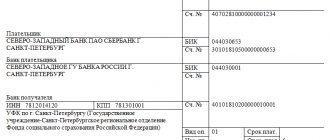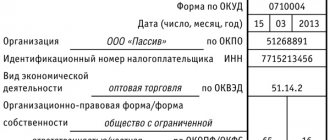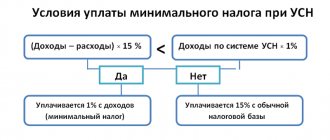Joint-stock companies and limited liability companies can accrue and pay dividends more than once a year.
But this should be done with caution, with great confidence that the organization will increase profits on a cumulative basis throughout the year. If at the end of the year the company has a loss, there is a risk that the tax authorities will reclassify these amounts as gratuitous payments. There may be adverse tax consequences for either party.
Current legislation does not prohibit the payment of interim dividends to participants of organizations. If a company made a profit based on the results of the first quarter, half a year or nine months, then its founders have the right to receive dividends. In paragraph 1 of Art. 42 of the Federal Law of December 26, 1995 N 208-FZ “On Joint-Stock Companies” states that the decision to pay (declare) interim dividends can be made within three months after the end of the corresponding quarter. At the same time, at the annual general meeting of shareholders, issues on the payment (declaration) of dividends must be resolved, with the exception of profits distributed as dividends based on the results of the first quarter, half a year, nine months of the financial year.
The term "dividends" is not used for limited liability companies. In relation to them they talk about “profit distribution”. A limited liability company has the right to decide on the distribution of net profit among participants at the same frequency, with the exception of nine months . To do this, it is necessary to hold an extraordinary general meeting of the organization’s participants (Clause 1, Article 28 of the Federal Law of 02/08/98 N 14-FZ “On Limited Liability Companies”).
According to paragraph 2 of Art. 42 of Law N 208-FZ, the source of payment of dividends is the company’s profit after taxation (net profit of the company). Dividends on preferred shares of certain types can also be paid from special funds previously formed for these purposes. In paragraph 1 of Art. 28, sub. 7 paragraph 2 art. 33 of the Law on Limited Liability Companies also establishes that the net profit of the company is subject to distribution among participants.
The concept of “net profit” is not defined by civil law. From paragraph 2 of Art. 42 of the Law on Joint Stock Companies, we can conclude that this is profit after tax. However, there is no indication of the fact that it is considered for the current year.
The company's net profit is determined according to the company's financial statements. Accounting profit (loss) is the final financial result (profit or loss) identified for the reporting period on the basis of accounting for all business transactions of the organization and evaluation of balance sheet items (clause 79 of the Regulations on accounting and financial reporting in the Russian Federation, approved by order Ministry of Finance of Russia dated July 29, 1998 N 34n). As for accounting for the amount of loss received in previous periods, according to the financial statements, when calculating dividends for 12 months of 2012 (fiscal year), the founders have the right to decide to pay off the loss for previous years or not.
The net profit received based on the results of the organization’s work for 9 months of 2012 is not used to pay off losses of previous years, since the profit of the reporting year will be generated and approved only based on the results of 12 months of 2012.
What kind of net profit can we talk about?
The net profit indicator is mentioned in paragraph 23 of PBU 4/99 as an indicator of the Profit and Loss Statement. According to the Instructions for the application of the Chart of Accounts for accounting the financial and economic activities of organizations, approved by Order of the Ministry of Finance of Russia dated October 31, 2000 N 94n, before the end of the reporting year in accounting, the amount of net profit received by the company for the reporting period (the final financial result of the reporting period) is determined comparison of debit and credit turnover in account 99 “Profits and losses” for this reporting period. Formally, the net profit account for the reporting year is account 99. The amount of net profit for the reporting year is written off with the final turnover of December to the credit of account 84 “Retained earnings (uncovered loss)” in correspondence with account 99 “Profits and losses”. At the same time, in the comments to account 75 “Settlements with founders” it is indicated that “The accrual of income from participation in the organization is reflected by an entry in the debit of account 84 “Retained earnings (uncovered loss)” and the credit of account 75 “Settlements with founders.” At the same time, the accrual and payment of income to employees of the organization who are among its founders (participants) is taken into account in account 70 “Settlements with personnel for wages.”
In the comments to account 84 it is written that “the direction of part of the profit of the reporting year to pay income to the founders (participants) of the organization based on the results of approval of the annual financial statements is reflected in the debit of account 84 “Retained earnings (uncovered loss)” and the credit of account 75 “Settlements with founders” and 70 “Settlements with personnel for wages”. A similar entry is made when paying interim income.”
Accrued interim dividends are reflected in accounting entries: Debit 84 Credit 75 “Settlements with founders.”
From all this terminological inconsistency, only one conclusion can be drawn: interim and annual dividends can be paid if there is a positive balance on account 84, i.e. retained earnings. But since such profit is determined only based on the results of the year, the presence of sufficient grounds for paying dividends is verified by the presence of net profit on account 99 in the current year and the absence of outstanding losses from previous years on account 84. The absence of a balance on account 84 does not indicate the absence of a source of payment of dividends in the current year, since the net profit reflected in account 99 is sufficient for such a payment. In letter dated August 23, 2002 N 04-02-06/3/60, the Russian Ministry of Finance expressed its point of view on the issue of dividend calculation. In accordance with it, the legislation regulating accounting in the Russian Federation does not provide for the possibility of writing off any expenses from net profit (account 99), except for those expenses that are determined by regulatory acts on accounting, which is reflected in the Chart of Accounts. The letter also emphasizes that balance sheet account 84 is intended to summarize information about the presence and movement of the amount of retained earnings (uncovered loss). And although accounting standards have now been updated for the most part, in relation to the situation under consideration they remain the same.
For tax purposes, a dividend is any income received by a shareholder (participant) from an organization when distributing profits remaining after taxation (including in the form of interest on preferred shares) on shares (interests) owned by the shareholder (participant) in proportion to the shares of shareholders (participants) in the authorized (share) capital of this organization. If payments are disproportionate, they cannot be considered a dividend; such income will be taxed in accordance with the generally established procedure.
When paying dividends to a Russian organization and an individual resident of the Russian Federation, the source of payment withholds tax at a rate of 9% (clause 2 of Article 214 and clause 2 of Article 275 of the Tax Code of the Russian Federation). When paying dividends to a non-resident of Russia (foreign organization or individual), tax is withheld at a rate of 15% (clause 3 of Article 224 and subclause 3 of clause 3 of Article 284 of the Tax Code of the Russian Federation). In addition, if certain conditions established in subparagraph are met. 1 clause 3 art. 284 of the Tax Code of the Russian Federation, there is also a zero income tax rate for dividends.
The payment of dividends is not a payment within the framework of labor relations or civil contracts, the subject of which is the performance of work or the provision of services. Consequently, from dividends paid by a Russian organization to its participants - individuals (including those who are its employees), insurance contributions to the Pension Fund of the Russian Federation, the Federal Social Insurance Fund of the Russian Federation, as well as compulsory medical insurance funds and compulsory insurance against industrial accidents and occupational diseases are not accrued (letter from the Federal Insurance Fund RF dated November 17, 2011 N 14-03-11/08-13985). Dividends are paid to the founders not on the basis of labor, civil law contracts or agreements on the alienation of exclusive rights, but by decision of the general meeting of the company's participants and are not included in the scope of taxation by insurance premiums.
When paying dividends to shareholders (regardless of the form of payment), the organization paying the income becomes a tax agent for taxes on: - profit (for payments to legal entities - clauses 2, 3 of Article 275 of the Tax Code of the Russian Federation); - income of individuals (for payments to individuals - clause 2 of Article 214 of the Tax Code of the Russian Federation).
The duty of the tax agent is to calculate, withhold and transfer taxes to the budget on the amount of dividends paid. When paying interim dividends, the company must fulfill the duty of a tax agent and transfer the appropriate amount of tax to the budget.
The tax period for income tax and personal income tax is a calendar year. No special provisions regarding the taxation of interim dividends Art. 275 of the Tax Code of the Russian Federation has not been established.
Each organization that has a clause on interim dividends in its charter bears the financial risk of paying them before summing up the results (without waiting for the results of the year). From an economic point of view, dividends represent part of the organization’s property, which the owners withdraw from the business, focusing on the availability of financial results. When paying interim dividends, there is a risk that at the end of the year such amounts will lose their status and preferential taxation.
If the profit at the end of the financial year turns out to be higher than the profit for nine months, half a year, or the first quarter, no problems arise: the interim payments made are dividends for both accounting and tax purposes.
Tax consequences arise if, at the end of the tax period, according to the financial statements, the organization may: - experience a loss, or - annual profit will be less than the total amount of accrued and paid interim dividends during the year.
In this case, the resulting difference is not considered for tax purposes as dividends based on the results of this tax period. It is subject to inclusion in the tax base: - for income tax as non-operating income taxed at the general rate for shareholder organizations (clause 8 of Article 250 of the Tax Code of the Russian Federation) - for income taxed with personal income tax for shareholders - individuals (clause 1 Article 224 of the Tax Code of the Russian Federation).
This position is set out in letters from the Ministry of Finance of Russia dated December 24, 2008 N 03-03-06/1/ 721, Federal Tax Service of Russia dated March 19, 2009 N ShS-22-3/ [email protected] , Federal Tax Service of Russia for Moscow dated July 15, 2009 N 16-12/ [email protected] ). The letters were issued during a crisis period when many companies were experiencing losses.
But, before considering the issue of recharacterizing the amounts paid, it is necessary to figure out whether it is possible to somehow save the situation.
Article 43 of the Tax Code of the Russian Federation also does not define the period for receiving net profit from which dividends are paid. From this we can conclude that the company can distribute at the end of the current reporting period both the profit received in the past quarter (six months, 9 months) and the retained earnings of previous years.
From the wording of paragraph 1 of Art. 28, sub. 7 paragraph 2 art. 33 of the Law on LLC and paragraph 2 of Art. 42 of the Law on JSC it follows that the source is undistributed (net) profit remaining at the disposal of the organization after taxation, which is determined according to the financial statements. At the same time, the source of dividends is not limited only to the net profit of the reporting year.
In a number of explanations, this is also expressed by regulatory authorities (letters of the Ministry of Finance of Russia dated 03/20/2012 N 03-03-06/1/133, dated 04/06/2010 N 03-03-06/1/235, Federal Tax Service of Russia dated 10/05/11 N ED -4-3/ [email protected] , Federal Tax Service of Russia for Moscow dated 06/08/2010 N 16-15/ [email protected] , dated 06/23/2009 N 16-15/063489). At the same time, the tax authorities additionally note that such a procedure for distributing net profit must be reflected in the organization’s charter. And the financial department in letters dated 03/20/2012 N 03-03-06/1/133, dated 04/06/2010 N 03-03-06/1/235 emphasizes that such payments are recognized as dividends only if the net profit of past for years was not aimed at the formation of a reserve fund and (or) a fund for the corporatization of employees (clauses 1, 2, article 35 of Law No. 208-FZ).
Judicial practice also proceeds from the fact that dividends can be paid from the net profit of previous tax periods (resolutions of the Federal Antimonopoly Service of the North Caucasus District dated January 23, 2007 No. F08-7128/2006, FAS East Siberian District dated August 11, 2005 No. A33-26614/04 -S3-F02-3800/05-S1).
Thus, there are no reasons why the owner cannot withdraw part of his capital as dividends accrued from the profits of previous years. However, when making a decision to reclassify the source of payment of dividends from the profit of the current year to the profit of previous years, it is necessary to take into account the timing of the meeting on the distribution of profit of the corresponding year and the decisions made at the meeting.
In practice, situations may arise when dividends on profits from previous years were not distributed, or a meeting was not held, or the issue of paying dividends was not considered. In this case, the decision to pay dividends based on the results of previous years can be formalized.
This step can be used in organizations with a small number of shareholders, provided that dividends have been accrued but never paid. Participants can cancel a previously made decision to accrue interim dividends or dividends based on the results of the previous year. If there was no movement of money, then taxes were not paid.
Refusal of dividends by participants or shareholders does not entail additional taxes. In paragraphs 3.4 clause 1 art. 251 of the Tax Code of the Russian Federation has recently indicated that when determining the tax base, income in the form of property, property rights or non-property rights in the amount of their monetary value is not taken into account in the event of restoration in the retained earnings of a business company or partnership not claimed by the shareholders or participants of the business company, partnership dividends or part of the distributed profit of a business company or partnership.
The Ministry of Finance of Russia indicated that the company's income in the form of funds due based on the decision of the company's participants on the distribution of net profit to be paid to one of the company's participants, but not actually paid to him due to the written refusal of this participant to receive this payment, is not subject to taxation. on the profit of organizations (letter dated 02.17.12 No. 03-03-06/1/91).
It is difficult to argue with the above position of the regulatory authorities on the re-qualification of dividends. But here one important question arises: who must pay the additional tax amount - the organization or its participants? The question of who has the right to refund tax on dividends—the tax agent or the participant—is ambiguous. The Tax Code does not explain this.
Rules for payment of interim dividends
So, participants, owners and employees - holders of shares have the right to claim dividends at the end of the year or interim.
The concept of dividends is legislatively approved only for joint stock companies. In the provisions of the Law “On LLC”, the term “redistribution of profits” is used to define such compensation, but to simplify the presentation of information, we will call them dividends.
The payment of dividends can only be initiated by the adoption of an appropriate decision by the meeting of the founders of the JSC/LLC or the sole founder of the LLC. The same document also states the amount of payments due.
The right to issue interim dividends (as well as for the year) is secured by the norms of laws No. 208-FZ “On JSC” and No. 14-FZ “On LLC”, which regulate the activities of enterprises of these forms of business. JSCs pay dividends on placed shares based on the results of a quarter, half a year or 9 months, while LLCs distribute profits among their participants.
Let us pay more attention to the criteria for paying dividends in LLCs, since most enterprises operate in this economic status. Law No. 14-FZ allows the frequency of profit distribution between participants to be established not only once a year, but also once every six months or quarterly, but does not oblige it to be recorded in the charter. Payment of dividends is the right of the enterprise, i.e., having transferred dividends, for example, for the 1st quarter, the company is not obliged to subsequently do this quarterly. She has the right to decide on payment based on her own capabilities at the end of any reporting period. The period during which the LLC has the right to make a decision on the payment of interim dividends is not limited by law, but the time for their payment cannot be more than 60 days from the date of the decision on the distribution of profits and its approval.
There are restrictions on the amount of dividends paid. For a joint-stock company, the volume of transfers should not exceed the amount recommended by the board of founders, and it should be transferred at a time to all shareholders (Article Federal Law No. 208-FZ). For an LLC, the total amount of dividends paid during the year should not exceed the amount of net profit received for the year.
How to get a share - who has the right to it?
All members of a limited liability organization included in a special register must receive dividends. The same rule applies to the founders of the enterprise, however in this situation additional documents may be required.
If the company's shares are held by shareholders, then they are also entitled to a share of the net profit, but in this situation there are several additional rules. For example, there must be a separate register with the date of its registration, it must contain a list of all shareholders.
The type of share is also of great importance; if it is a preferred share, then the share is paid for it first and only then for standard shares.
Interim dividends in LLC: how to calculate
Dividend amounts are calculated based on the amount of retained earnings, the amount of which is reflected in line 1370 of the balance sheet. This indicator is the profit at the disposal of the company; it is formed based on the total values for all years of the enterprise’s activity. The meeting of founders, when announcing the amount of dividends to be paid, is guided by the volume of accumulated profits.
Dividends are calculated based on their amount to be paid, approved by the decision of the founders. Typically, income in an LLC is distributed in proportion to the shares of participants invested in the authorized capital, within the limits of the amount of dividends due indicated in the protocol, and in a JSC - according to the types and number of shares held by the holders.
In which case the decision cannot be made
The founders can, at their own discretion, decide how to dispose of the profits. For example, in the early stages of development, instead of paying everyone their share, it is possible to direct funds to modernize the enterprise. But there are also cases when the decision is simply perceived as illegal. This happens in the following cases:
Until the date when all shares are purchased, in accordance with the requirements of shareholders.
If managers did not comply with the rules on net assets - when, due to the accrual of dividends, the amount of net assets decreases.
If contributions to the authorized capital have not yet been fully paid.
If there is a risk of going bankrupt.
These four situations may cause any member of a limited liability organization to go to court and challenge the decision. In court it was declared illegal.
Interim dividends: postings
In accounting, data on accrued and issued amounts of dividends are accumulated for settlements with the founders on account 75/2, and with the company’s employees for settlements with personnel - on account 70. The corresponding account is the retained earnings account - 84. Typical accounting entries for these operations are as follows:
| Content | D/t | K/t |
| Dividends accrued: | ||
| - founders | 84 | 75 |
| - employees | 84 | 70 |
| Personal income tax withheld from accrued income | 75,70 | 68 |
| Dividends paid (transferred) | 75,70 | 50,51 |
| Personal income tax paid on accrued dividends | 68 | 51 |
Example
Comfort LLC decided to distribute a share of the profit received for the 1st quarter of 2021 in the amount of 2,000,000 rubles. between the founders:
— I.T. Sergeev, who has a 30% share in the company’s management company;
— Komarov A.R. (45% in the management company);
— Temp LLC (25% in the management company).
The accountant made the calculations:
| Participants | Member status | Amount of dividends (RUB) | Personal income tax | Income tax | Amount to be paid |
| Sergeev I.T. | employee, resident of the Russian Federation | 600,000 (2,000,000 x 30 / 100) | 78 000 (13%) | — | 522 000 |
| Komarov A.R. | not an employee, non-resident of the Russian Federation | 900,000 (2,000,000 x 45 /100) | 135 000 (15%) | — | 765 000 |
| LLC "Temp" | LLC, tax resident of the Russian Federation | 500,000 (2,000,000 x 25/100) | 65 000 (13%) | 435 000 |
Dividends were transferred to participants in May 2021. Taxes were charged on payments:
– personal income tax for individuals – at a rate of 13% on amounts accrued to tax residents, a rate of 15% applies to the income of individuals who do not have resident status;
– income tax for the legal entity Temp LLC, a participant in Comfort LLC and a resident of the Russian Federation - at a rate of 13% of the accrued amount. The tax rate for non-residents is 15%.
If there is a loss at the end of the year
After management announces the need to pay interim dividends, the accountant may have another question: what will happen if at the end of the year it turns out that the organization has no profit?
As we remember, according to the article of the Tax Code of the Russian Federation, for tax purposes, a dividend is the income received by a participant from an organization when distributing profits remaining after taxation. That is, we are not talking about “accounting” profit, but about tax profit. Let us explain what this means in relation to different taxation systems.
The tax period for income tax and for the single tax paid under the simplified tax system is the calendar year (Articles 285 and 346.19 of the Tax Code of the Russian Federation). Thus, for organizations using these taxation systems, a distribution of profits made in the middle of the year can be regarded as the payment of “tax dividends” only if at the end of the year the company actually has a profit after tax. It is easier for organizations that pay UTII, since the tax period for this tax is a quarter (Article 346.30 of the Tax Code of the Russian Federation). This means that an interim distribution of profits will always be considered a payment of dividends for tax purposes.
Keep records, prepare and submit reports according to the simplified tax system via the Internet
But let’s return to payers who are on OSNO or simplified tax system. If for such an organization the amount of interim dividends paid turned out to be greater than the net profit received at the end of the financial year, then the difference for tax purposes is recognized as the income of the participants, but not as dividends (letters of the Ministry of Finance of Russia dated December 24, 2008 No. 03-03-06/1/721 and Federal Tax Service of Russia dated March 19, 2009 No. ШС-22-3/ [email protected] ). In fact, this will be the same “other payment” that we talked about above when we considered the issue of distributing profits disproportionately to the shares of participants in the authorized capital. And since the payment in favor of the participant occurs without any counter-representation, for tax purposes it is qualified as property transferred free of charge to the participant (clause 2 of Article 248, clause 1 of Article 346.15 of the Tax Code of the Russian Federation).
Since the personal income tax rate for income in the form of dividends is now equal to the general rate of 13 percent, reclassification of payment from dividends to “other income” for an organization that is a tax agent will only mean the need to submit updated 6-personal income tax calculations. It is necessary to adjust the calculation for the period in which the specified income was paid, as well as calculations for all subsequent periods, if during their preparation this payment was taken into account specifically as dividends. In the updated calculations, it will be necessary to exclude from lines 025 and 045 of section 1 amounts that are not dividends, and personal income tax on these payments. (Note that if a joint stock company finds itself in a similar situation, then it will also be necessary to submit updated income tax returns, excluding section A of sheet 03 from them).
As for the tax consequences for the organization itself as a taxpayer, in the case under consideration, reclassification of the payment will not entail any consequences, since neither dividends nor gratuitously transferred property are taken into account for taxation (clause 1 and clause 16 of Article 270, clause 2 Article 346.16 of the Tax Code of the Russian Federation).
As we can see, in a situation where, based on the results of the year in which interim dividends were paid, the organization suffered a loss, no catastrophic tax consequences arise. At the same time, there is a legal way to avoid the consequences mentioned above.
So, if an LLC has undistributed profits from previous years, then the general meeting (the only participant) may decide that interim dividends should be paid from these profits. In this case, the payments will retain the status of dividends.
The question of whether accruals will be recognized as dividends or not is especially important in a situation where payments are made in favor of participants with whom employment contracts have been concluded. The fact is that the qualification of the payment determines whether insurance premiums need to be charged on it.
Interim dividends in financial statements
The accrual of interim dividends is recorded in the debit of account 84, reducing the amount of profit for the corresponding reporting period - quarter, half-year or 9 months. from the amounts of profit for the quarter, half a year, 9 months, in line 1370 for the amount of due payments. In the balance sheet, the amounts of interim dividends accrued during the year are indicated in specially open lines deciphering the use of profits - 1371, 1372, etc. The paid dividend amounts are reflected in the balance sheet asset, reducing the amount of cash in line 1250. The data in the example given will be reflected in the balance sheet for the half-year.
It is also impossible to see the specific value of dividends paid in the financial results statement. This indicator reduces the total amount of net profit, which is indicated in line 2400. It is more advisable for the user to refer to the explanations attached to the company’s financial statements. In them, the company records the amounts of accrued and paid income and the frequency of payments made.
Origin of profit for accruals
Before accruing and paying the due shares to each participant, the amount of tax must be deducted. That is, the source is the net income that remains with the company. The problem is that the legislation of the Russian Federation does not have a clear term for defining net income and it practically does not regulate this concept. To distribute profits, the company's accounting records are taken into account and supported by a balance sheet and other necessary papers.
It is in such documentation that information about the undistributed funds of a limited liability company is contained. The concept of undistributed funds includes the money that remains after paying all necessary expenses and taxes, as well as penalties, if any.
So from what profits are dividends paid? The amount that is indicated on the balance sheet is perceived as capital for division between the founders. If the authorized capital includes funds from municipal or government institutions, then they are required to give at least thirty percent of the net annual income.








